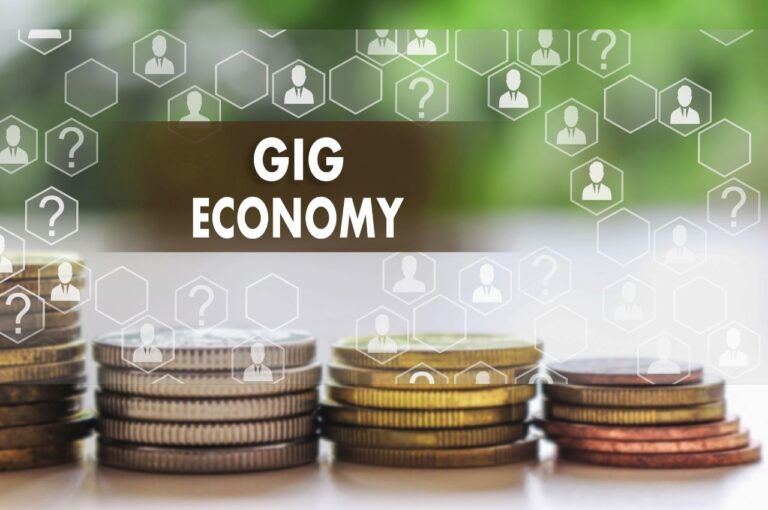Listen to the article
Many people consider cities a place where they can achieve their dreams because of the vast opportunities for work. However, the constant migration of people to cities leads to congestion and strained resources. Citizens are demanding better cities that are livable, sustainable, affordable, and provide basic infrastructure. Governments must develop sustainable cities and communities, and emerging technology is the smart way to do it.
This article focuses on SDG 11 – Make cities and human settlements inclusive, safe, resilient and sustainable – and how emerging technology will make cities sustainable and smart.
What Are the Concerns of SDG 11?
The Sustainable Development Goals Report 2021 says that the average global share of the urban area allocated to streets and open public spaces is 16% compared to the target of 30% streets and 10-15% open public spaces. Only half of the world’s urban population has convenient access to public transport. 156 countries have developed urban policies, but only half are in the implementation stage. The pandemic worsened the plight of slum dwellers.
Why Do We Need Sustainable Cities and Communities?
Many cities are struggling with inadequate infrastructure, traffic congestion, sanitation and waste management problems, water shortage, uncontrolled urban growth and crime. To make cities more livable for their communities, they must be sustainable.
A sustainable city is an eco-city or green city. It is designed with consideration for social, economic and environmental impact, and is a resilient habitat for existing populations without compromising the ability of future generations to experience the same.
The World Bank says that governments have to transform urban centres into resilient and sustainable communities that benefit residents by reducing energy costs, improving quality of service, reducing waste, providing better urban environments, and creating economic opportunities.
Many governments are turning to emerging technologies to achieve SDG 11 and create sustainable cities and communities that are also smart.
The Move Towards Smart Cities
McKinsey & Company notes that municipal leaders are realizing that smart city strategies start with people, not technology. Technology and data are to be used purposefully to make better decisions and deliver a better quality of life. The goal of smart cities is to make them livable for the present and future generations.
TWI-Global says a smart city uses information and communication technology (ICT) to improve operational efficiency, share information with the public, and provide a better quality of government service and citizen welfare.
The emerging technologies available to smart cities will make them more efficient and manage the rapid urban population growth in the coming decades sustainably.
IoT and Big Data Drive Smart Cities
Smart cities mainly use the Internet of Things (IoT) and big data to provide solutions to citizens. Other technologies include artificial intelligence (AI), cloud computing, machine learning, etc.
According to NEC, IoT and big data have the most significant impact on the development of cities. Using IoT devices and sensors to collect data has helped cities improve their operations and prepare for future expansion.
Examples of Smart Cities
In this article, we will feature Singapore, Dubai, and Copenhagen.
Singapore
The IMD- SUTD Smart City Index 2021 recognized Singapore as the world’s smartest city for the third year running. Singapore’s Smart Nation initiative is to transform Singapore into a world-class, technology-driven city-state.
Singapore has a national digital identity for citizens and businesses to transact with the government and other private service providers. It has installed public buses with sensors to gather information on their real time location and arrival times.
Singapore has automated its waste collection system and put sensors in the lighting system to collect data on human movement patterns. Robotics and assistive technologies provide solutions to help seniors and those with disabilities be more mobile.
Dubai
Dubai is one of the smartest cities in the Middle East. It aims to become a smart sustainable city that uses ICT and other means to improve quality of life and the efficiency of urban operations and services.
One way Dubai has used smart technologies is by creating the Smart Police Station (SPS), which is an integrated interactive self-service police station. Members of the community have access to smart services, e.g., registering a criminal report, delivery of found materials and requesting certificates and permits. Citizens don’t have to visit traditional police stations or wait in queues for services.
Copenhagen
Copenhagen, the capital city of Denmark, is the world’s greenest city. It is the most bicycle-friendly city in the world. It has invested strongly in renewable energy and has implemented a sophisticated network of sensors designed to improve the efficiency of municipal buildings (Tomorrow.City).
One-fourth of Copenhagen comprises green spaces (parks, lakes, coast and natural areas). Green roofs in new buildings allow for rooftop gardens that reduce pollution and use rainwater well.
The “Copenhagen Connecting” plan has received international recognition. It collects and uses data to create a greener city and a better business climate.
Conclusion
Emerging technologies will transform cities into sustainable and smart cities that improve operations and quality of life of their populations. The private sector, citizens and governments can partner in addressing the current challenges to create sustainable cities and communities.
Prof. Gerhard Schmitt says that smart cities can evolve into responsive cities where citizens move from being the centre of observation to becoming the centre of the action. The citizens can engage in decisions that affect their lives and environment.
We can help you overcome your technological challenges and gain a competitive advantage in your industry. Contact us today to learn more.



